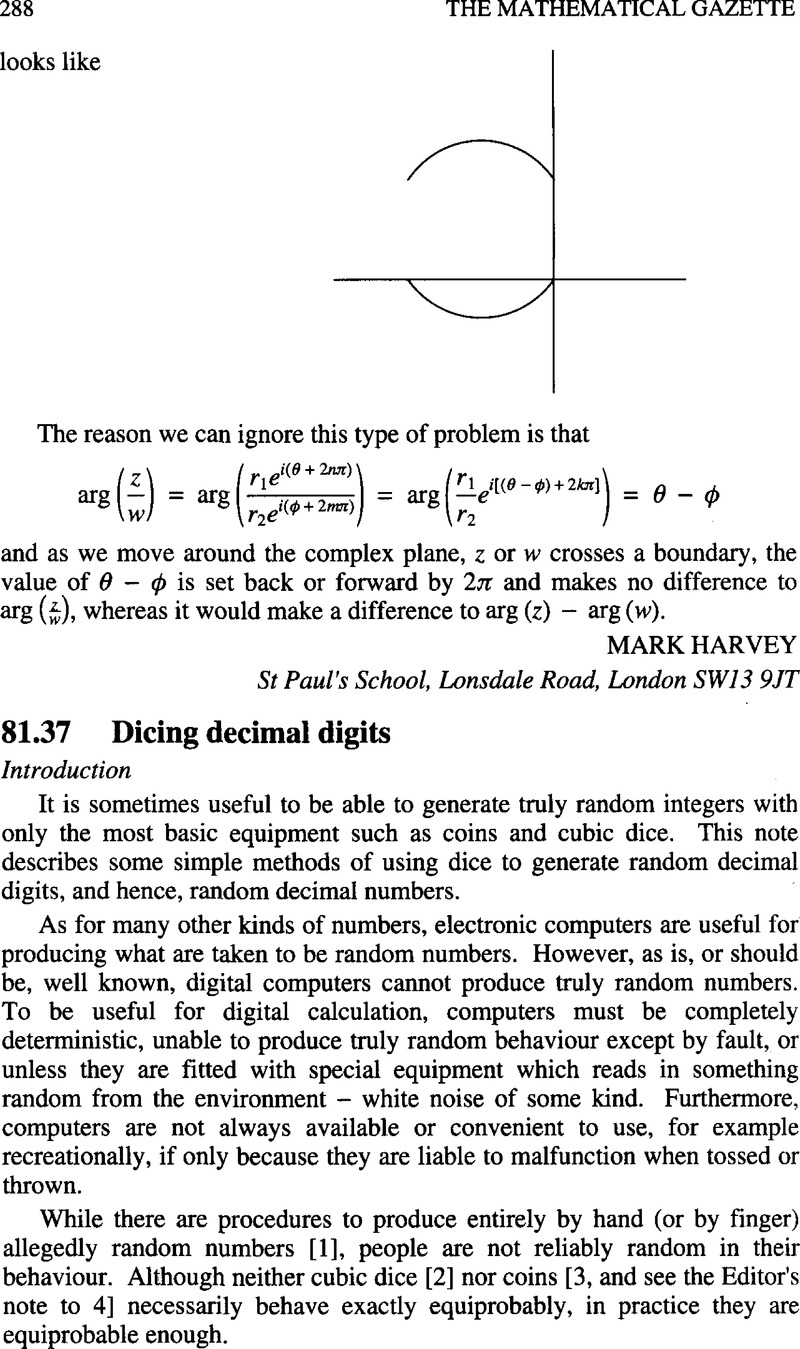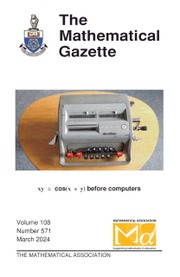No CrossRef data available.
Article contents
81.37 Dicing decimal digits
Published online by Cambridge University Press: 01 August 2016
Abstract
An abstract is not available for this content so a preview has been provided. Please use the Get access link above for information on how to access this content.

Information
- Type
- Notes
- Information
- Copyright
- Copyright © The Mathematical Association 1997
References
1.
Zeilberger, D. and Legrange, J., How to play backgammon without dice, Journal of Recreational Mathematics
11, 3 (1978–79) p. 206.Google Scholar
2.
Blest, D.C. and Hallam, C.B., The design of dice, Mathematics Today
32, (January/February 1996) pp. 8–13.Google Scholar
3.
Szalkai, I. and Velleman, D., Versatile coins, Amer. Math. Monthly
100, (January 1993), pp. 26–33.CrossRefGoogle Scholar
4.
Singmaster, D., Theoretical probabilities for a cuboidal die, Math. Gaz. 65 (October 1981) pp. 208–210.CrossRefGoogle Scholar
5.
Gardner, M., On the ancient lore of dice and the odds against making a point, Scientific American
219 (November 1968) pp. 140–146.CrossRefGoogle Scholar
8.
Gardner, M., Simplicity as a scientific concept, Scientific American
221, (November 1969) pp. 118–121.CrossRefGoogle Scholar

